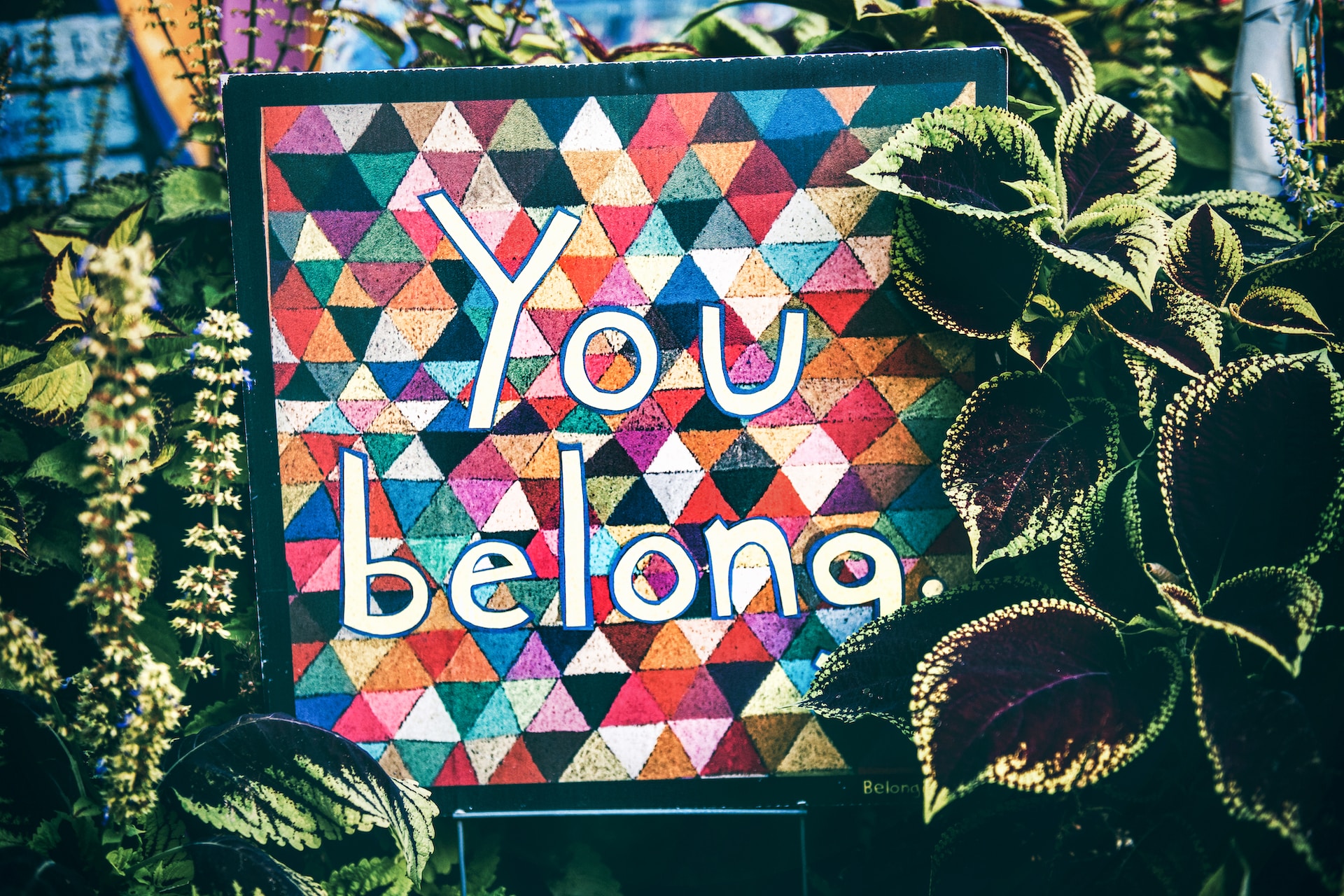Ensuring Website Inclusivity: A Guide to Embracing All Minorities in the Digital World
The digital realm serves as a reflection of our diverse society. Websites, as the gateways to this realm, hold immense power in shaping perceptions, influencing decisions, and providing access to information. However, with this power comes a profound responsibility: to ensure that every individual, regardless of their background, abilities, or circumstances, feels seen, heard, and valued. This is the essence of website inclusivity.
Quick Links
The digital landscape is vast, and its potential is boundless. Yet, for many minorities, navigating this landscape can feel like traversing a maze filled with barriers. Whether it’s a person with a disability struggling to access content due to poor web design, a non-native speaker feeling alienated by culturally insensitive imagery, or users confronted with non-inclusive language, the challenges are real and pervasive.
Beyond the moral and ethical imperatives, there are also legal requirements to consider. Many countries have established regulations mandating digital accessibility, ensuring that websites are usable by people with disabilities. Non-compliance can lead to legal repercussions, making it not just a matter of doing what’s right but also what’s required by law.
But why does inclusivity matter in the digital space? For one, it’s a matter of equity and justice. Everyone deserves equal access to online resources and opportunities. Inclusive imagery and language play a pivotal role in this. They shape narratives, influence perceptions, and have the power to either alienate or embrace diverse user groups. Moreover, from a business perspective, inclusivity can enhance brand reputation, foster loyalty, and even drive better SEO results. After all, a website that caters to a broader audience naturally attracts more traffic and engagement.
In this guide, we’ll delve deep into the concept of digital inclusivity, shedding light on the challenges faced by minorities online and offering actionable strategies to create a more welcoming and inclusive web experience for all. As we embark on this journey, let’s remember that inclusivity isn’t just a buzzword; it’s a commitment to breaking down barriers and building bridges in the digital world.
1. Understanding the Concept of Digital Inclusivity
Defining Digital Inclusivity
Digital inclusivity goes beyond just making a website accessible. It’s about creating an online environment where everyone, irrespective of their background, abilities, gender identity, sexual orientation, or circumstances, can interact, engage, and benefit equally. It’s a holistic approach that encompasses design, content, functionality, and overall user experience.
The Significance of Digital Inclusivity

Equity and Fairness
At its core, digital inclusivity is about ensuring that everyone has equal opportunities to access and benefit from online resources. It’s about leveling the playing field and removing barriers that prevent certain user groups from fully participating in the digital world.
Broader Audience Reach
An inclusive website naturally caters to a wider audience. By addressing the needs and preferences of diverse user groups businesses can tap into new markets, increase their user base, and foster brand loyalty.
Enhanced User Experience
Inclusivity often translates to better usability. Features that make a website more accessible to people with disabilities can also improve the overall user experience for everyone. Additionally, content that resonates with the experiences and identities of all individuals can foster a deeper sense of connection and trust.
Digital Inclusivity vs. Web Accessibility
While the two terms are often used interchangeably, they are distinct concepts. Web accessibility primarily focuses on ensuring that people with disabilities can use a website effectively. It’s about technical and design considerations that make a site usable for everyone, including those with visual, auditory, cognitive, or motor impairments.
Digital inclusivity, on the other hand, has a broader scope. It encompasses web accessibility but also delves into cultural, linguistic, socio-economic, body shape differentiated individuals or collectives and LGBTQ+ considerations. It’s about ensuring that the digital space is welcoming and representative of all its users, celebrating diversity in all its forms.
Understanding digital inclusivity is the first step towards creating a more inclusive online presence. It’s about recognizing the diverse needs of the online community and taking proactive steps to address them. As we move forward in the digital age, it’s imperative for businesses and web developers to prioritize inclusivity, not just as a best practice, but as a fundamental principle of web design and content creation.
2. The Challenges Faced by Minorities Online
Barriers for People with Disabilities
Technical Hurdles
Many websites are not designed with accessibility in mind, leading to challenges for those using screen readers, voice commands, or other assistive technologies.
Lack of Alt Text
Images without alternative text can be a major barrier for visually impaired users, as they rely on this text to understand the content of the image.
Inaccessible Multimedia
Videos without captions or transcripts exclude deaf or hard-of-hearing users from accessing the content.
Cultural and Linguistic Challenges
Language Barriers
Many websites are available only in one language, making it difficult for non-native speakers to access and understand the content.
Culturally Insensitive Content
Content that doesn’t take into account cultural nuances can alienate users from different backgrounds. This includes imagery, idioms, or references that may not resonate or might even offend certain cultures.
Challenges for Members of underrepresented groups
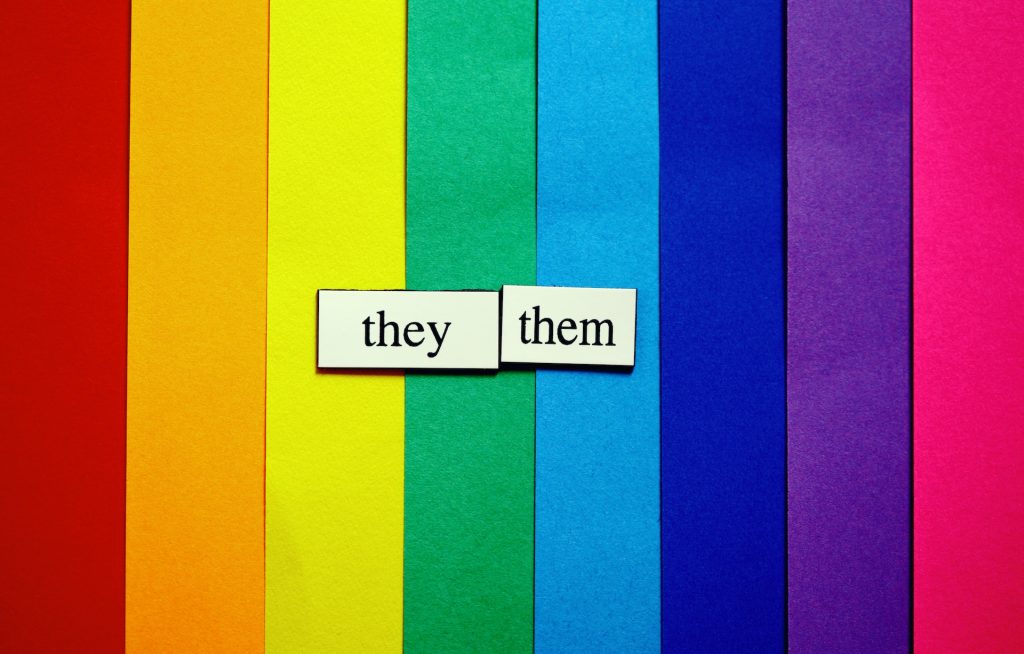
Lack of Representation
Many websites lack content that represents or addresses the experiences and identities of underrepresented groups and communities.
Stereotyping and Misinformation
Some websites may perpetuate stereotypes or spread misinformation about individuals in underrepresented groups and communities, leading to feelings of alienation or misrepresentation.
Privacy Concerns
Members of the underrepresented groups and communities might be hesitant to share personal information on websites due to fears of discrimination or backlash.
The Digital Divide and Socio-Economic Challenges
Limited Access
Socio-economic factors can limit access to high-speed internet or modern devices, making it challenging for marginalized communities to access online resources.
Lack of Digital Literacy
Some individuals may not have the skills or knowledge to navigate the digital world effectively, putting them at a disadvantage.
The challenges faced by minorities online are multifaceted and complex. Recognizing these challenges is the first step towards creating a more inclusive digital environment. By understanding the unique hurdles faced by different user groups, businesses can take proactive measures to address them, ensuring that their websites are truly inclusive and welcoming for all.
3. Web Accessibility: A Cornerstone of Inclusivity
The Importance of Web Accessibility
Universal Access
Web accessibility ensures that everyone, including people with disabilities, can access, understand, and navigate web content without barriers.
Legal Implications
Many countries have established regulations mandating digital accessibility. Non-compliance can lead to legal repercussions, emphasizing the importance of adhering to accessibility standards.
Enhanced User Experience
Accessible websites often provide a better user experience for all visitors, not just those with disabilities. Features like clear navigation, readable fonts, and logical content structure benefit everyone.
Tools and Techniques for Enhanced Accessibility
Screen Readers and Alternative Text
Screen readers vocalize digital content for visually impaired users. Providing alternative text for images ensures that these users can understand the context and content of visuals.
Keyboard Navigation
Many users, especially those with motor impairments, rely on keyboards rather than mice to navigate websites. Ensuring that all website functions are accessible via keyboard is crucial.
Color Contrast and Font Readability
Ensuring sufficient contrast between text and background colors aids users with visual impairments. Using clear and readable fonts also enhances accessibility.
Captions and Transcripts
Providing captions for videos and audio content ensures that deaf or hard-of-hearing users can access multimedia content. Transcripts offer an additional layer of accessibility, allowing users to read or search the content.
Incorporating Feedback for Continuous Improvement
User Testing
Engaging with users, especially those with disabilities, to test website accessibility can provide invaluable feedback. This hands-on approach can highlight areas of improvement that might not be evident otherwise.
Regular Audits
Conducting regular accessibility audits using tools like WAVE or AXE can help identify and rectify potential issues, ensuring continuous compliance with accessibility standards.
Web accessibility is more than just a technical requirement; it’s a reflection of a website’s commitment to inclusivity. By prioritizing accessibility, businesses can ensure that their digital presence is not only compliant with regulations but also genuinely inclusive, welcoming, and user-friendly for all visitors.
5. Engaging with Minority Communities
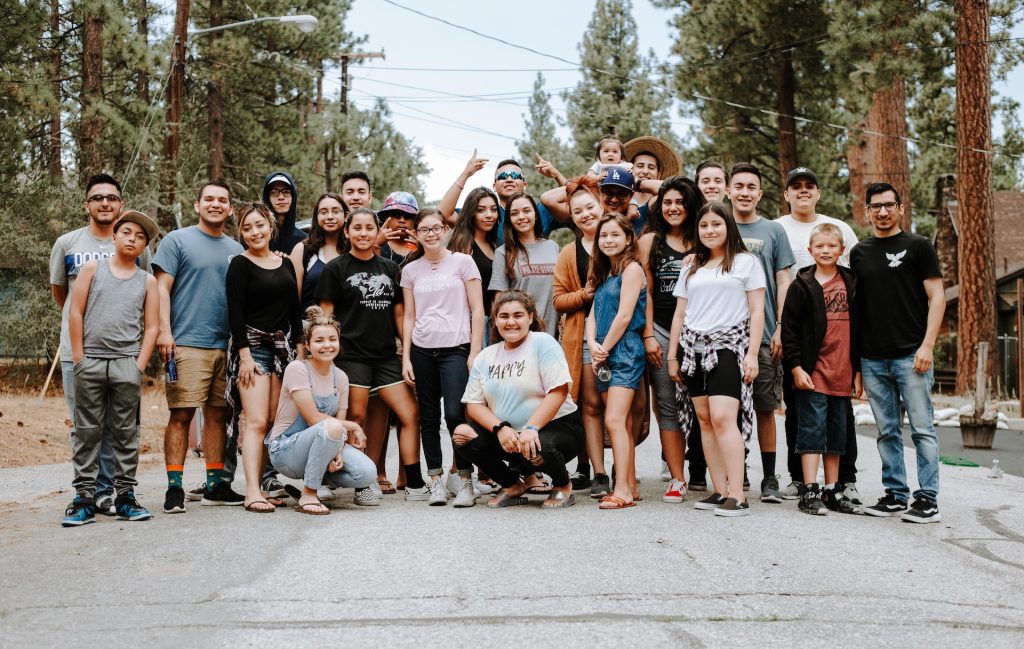
The Value of Feedback from Minority Users
Insightful Perspectives
Minority users can offer unique insights into the user experience, highlighting areas of improvement that might not be evident to the majority.
Building Authentic Relationships
Actively seeking feedback from minority communities fosters a sense of belonging and shows that their opinions and experiences are valued.
Collaborating with Minority Influencers and Content Creators
Amplifying Diverse Voices
Partnering with influencers and creators from minority backgrounds can bring fresh perspectives to content, ensuring it resonates with a broader audience.
Building Credibility
Collaborations with respected figures within minority communities can enhance a website’s credibility and trustworthiness within those communities.
Hosting Webinars and Workshops
Educational Initiatives
Hosting webinars on topics relevant to minority communities can educate the broader audience and showcase commitment to inclusivity.
Engagement Opportunities
Workshops provide an interactive platform for users to engage, ask questions, and share their experiences, fostering a sense of community.
Highlighting Success Stories from Minority Communities
Inspiration and Motivation
Sharing success stories of individuals from minority backgrounds can inspire and motivate users, showcasing the possibilities and potential within these communities.
Breaking Stereotypes
Such stories can challenge prevailing stereotypes and biases, promoting a more inclusive and holistic view of minority communities.
Creating Dedicated Spaces for Minority Communities
Forums, Social Media Channels and Discussion Boards
Creating dedicated spaces where minority users can discuss, share, and connect can foster a sense of community and belonging.
Resource Centers
Offering resources specifically tailored to the needs and interests of minority communities can show commitment to their well-being and success.
Engaging with minority communities is not just about representation; it’s about active participation, collaboration, and mutual respect. By taking proactive steps to engage with these communities, businesses can ensure that their digital presence is truly inclusive, resonating with all users and fostering a sense of community and belonging.
6. SEO Benefits of an Inclusive Website
Enhanced User Engagement
Lower Bounce Rates
Websites that cater to a diverse audience and provide accessible and relevant content are likely to experience lower bounce rates, as users find value in the content and stay longer.
Increased Time on Site
Inclusive content that resonates with a broader audience can lead to users spending more time on the website, exploring different pages and resources.
Diverse and Localized Content
Reaching a Global Audience
Offering content in multiple languages or tailoring content to specific cultural nuances can help websites rank higher in local search results, tapping into new markets.
Rich Snippets and Featured Results
Inclusive and well-structured content can increase the chances of a website being featured in rich snippets on search engine results pages, driving more organic traffic.
Improved Website Accessibility and Technical SEO
Better Site Navigation
Websites optimized for accessibility often have clear and logical navigation, which search engines favor when crawling and indexing.
Alt Text and Multimedia Transcripts
Providing alternative text for images and transcripts for multimedia content not only benefits users with disabilities but also provides additional content for search engines to index.
Building Trust and Authority
Quality Backlinks
Inclusive content that resonates with a diverse audience is more likely to be shared and linked to, leading to quality backlinks and improved domain authority.
Positive User Reviews
Websites that prioritize inclusivity can garner positive reviews and testimonials, which can influence search engine rankings and online reputation.
Inclusivity and SEO go hand in hand. An inclusive website not only fosters a sense of belonging among diverse users but also offers tangible SEO benefits. By prioritizing inclusivity, businesses can enhance their online visibility, reach a broader audience, and establish themselves as authorities in their respective fields.
7. Case Studies: Brands Enhancing Website Inclusivity
Apple: Prioritizing Web Accessibility
Background
Apple, known for its innovative tech products, has always emphasized inclusivity in its design philosophy.
Actions Taken
- Apple’s website features a dedicated Accessibility section, showcasing the accessibility features of its products.
- – The website is designed for compatibility with screen readers, voice commands, and other assistive technologies.
- – They provide detailed guides on how to use the accessibility features across their product range.
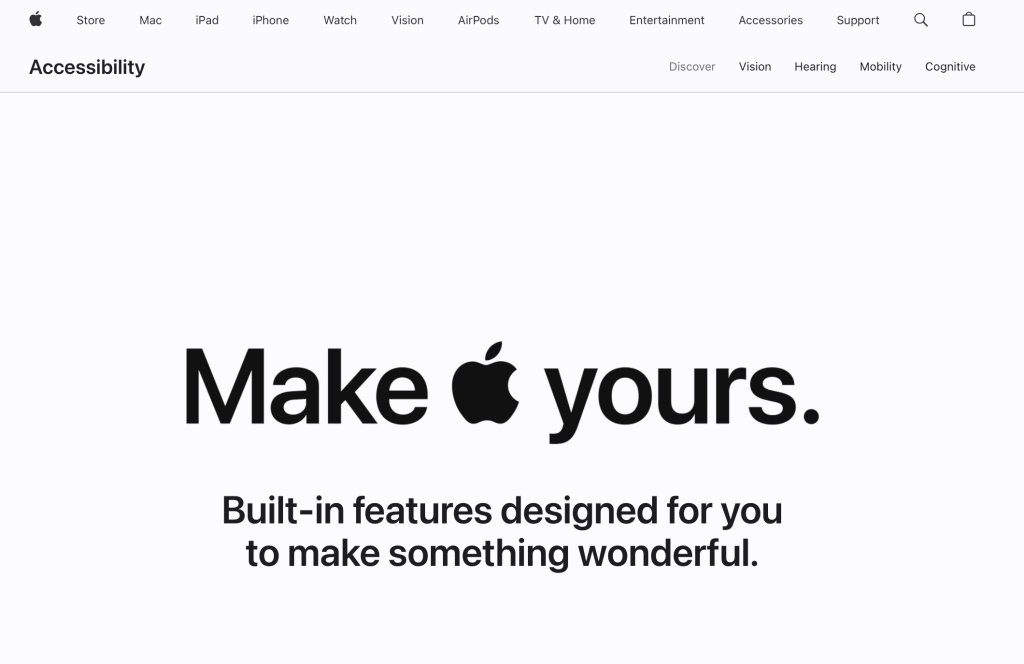
Results
- Recognition as an industry leader in web accessibility.
- Positive feedback from the disability community for their commitment to inclusivity.
Sephora: Embracing Diversity in Beauty
Background
Sephora, a leading beauty retailer, recognized the importance of representing all beauty standards on its platform.
Actions Taken
- Launched the We Belong to Something Beautiful campaign, emphasizing inclusivity and diversity.
- The website features models of various ethnicities, genders, and body types.
- Introduced filters on their website allowing users to search for brands that are cruelty-free, Black-owned, etc.
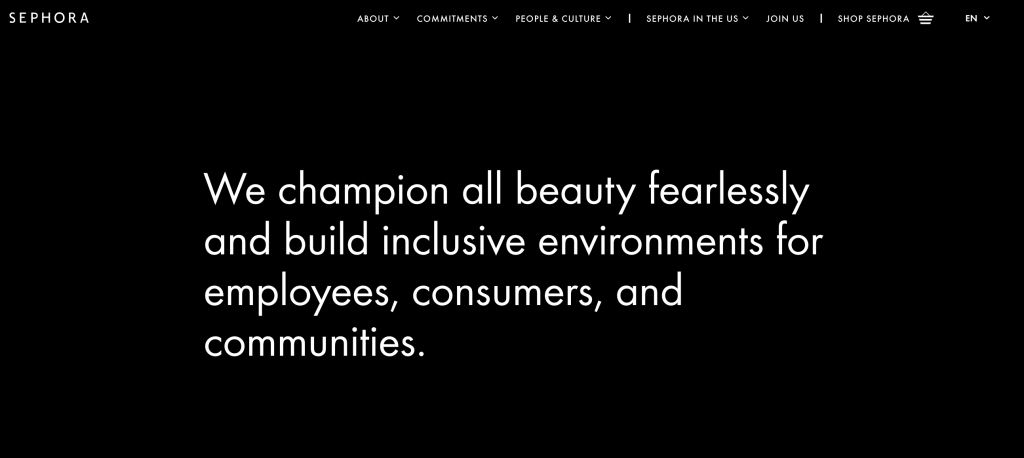
Results
- Praised for their commitment to breaking traditional beauty standards.
- Increased engagement from diverse user groups seeking inclusive beauty products.
BBC: Making Content Accessible for All
Background
The British Broadcasting Corporation (BBC), a public service broadcaster, has a responsibility to cater to all segments of the population.
Actions Taken
- The BBC website offers My Web My Way, a comprehensive guide to making the web more accessible, covering various disabilities.
- Features like adjustable text size, high contrast themes, and screen reader-friendly layouts are integrated into the website.
- The BBC also provides subtitles for most of its video content, catering to the deaf and hard-of-hearing community.
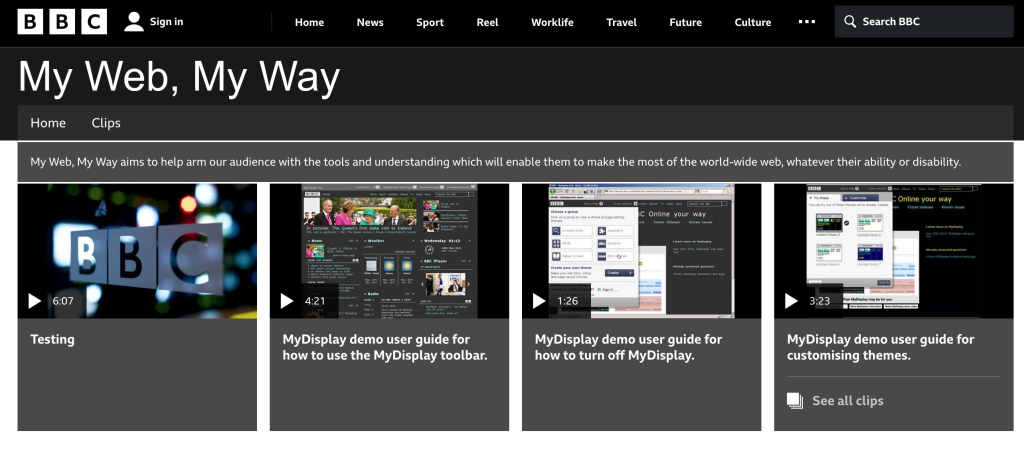
Results
- Acknowledged for their efforts in making online content accessible to a wider audience.
- Positive feedback from users who benefit from the accessibility features.
8. Actionable Strategies for Creating an Inclusive Website
1. Conduct Regular Accessibility Audits
- Why: Regular audits help identify potential accessibility issues, ensuring that the website remains compliant with accessibility standards.
- How: Utilize tools like WAVE, AXE, or Lighthouse to conduct comprehensive accessibility checks.
2. Prioritize Inclusive Imagery
- Why: Visual representation matters. Diverse imagery ensures that all users feel seen and represented.
- How: Collaborate with diverse photographers, use inclusive stock photo platforms, and ensure marketing campaigns represent a broad spectrum of individuals.
3. Offer Multilingual Support
- Why: Catering to non-native speakers can significantly expand your website’s reach and user base.
- How: Use translation services or plugins and consider cultural nuances when creating content for different languages.
4. Engage with Minority Communities
- Why: Direct engagement provides insights into the unique needs and preferences of minority users.
- How: Conduct surveys, host focus groups, and collaborate with influencers from diverse backgrounds.
5. Ensure Gender-Inclusive Design
- Why: Gender inclusivity is crucial in today’s digital landscape, especially for the LGBTQ+ community.
- How: Use gender-neutral language, offer inclusive form options (e.g., more than just ‘male’ and ‘female’), and avoid gendered stereotypes in content.
6. Provide Inclusive Content Formats
- Why: Different users have different content preferences and accessibility needs.
- How: Offer content in multiple formats – articles, videos, podcasts, infographics – and ensure they are accessible (e.g., provide transcripts for audio content).
7. Educate and Train Your Team
- Why: An inclusive website starts with an inclusive mindset. Educating your team ensures that inclusivity is integrated into every aspect of your website.
- How: Host workshops on cultural sensitivity, web accessibility, and inclusive design. Stay updated with the latest inclusivity trends and best practices.
8. Seek Feedback and Continuously Improve
- Why: Inclusivity is an ongoing journey. Regular feedback ensures that the website continues to meet the evolving needs of its diverse user base.
- How: Implement feedback forms, engage with users on social media, and be open to making necessary changes based on user insights.
Creating an inclusive website is both a moral imperative and a strategic advantage. By embracing diversity and ensuring that all users feel valued and represented, businesses can foster trust, enhance user engagement, and position themselves as leaders in the digital age. The journey towards inclusivity requires commitment, continuous learning, and proactive action – but the rewards, both in terms of user satisfaction and business growth, are well worth the effort.
Conclusion: The Imperative of Inclusivity in the Digital Age
In today’s interconnected world, the digital landscape serves as a reflection of our broader society. As we strive for inclusivity and equity in our communities, it’s essential that our online spaces mirror these values. An inclusive website is more than just a platform that’s accessible to all; it’s a testament to a brand’s commitment to recognizing, valuing, and celebrating the diverse tapestry of its audience.
The benefits of an inclusive website extend beyond moral responsibility. From enhanced user engagement, trust-building, and SEO advantages to tapping into broader markets, the business case for inclusivity is compelling. Brands like Apple, Sephora, and BBC have showcased the tangible benefits of prioritizing inclusivity, setting a benchmark for others to follow.
However, the journey towards creating an inclusive website is ongoing. It requires continuous effort, feedback, adaptation, and, most importantly, a genuine desire to make the digital world welcoming for all. As technology continues to evolve and shape our lives, it’s imperative for businesses, web developers, and content creators to champion inclusivity at every step.
In the words of Verna Myers, “Diversity is being invited to the party; inclusion is being asked to dance.” Let’s ensure that our digital spaces not only invite everyone to the party but also create an environment where everyone feels free to dance.
What Is WooCommerce Product Slider and Why Your Store Needs It
Why Do Product Images Matter So Much in Online Stores? When someone visits an online store the…
0 Comments9 Minutes
How to Streamline Your Customers’ Shopping Experience?
The goal for any online store is to make shopping as smooth as possible. When visitors move…
0 Comments8 Minutes
Strengthening Brand-Customer Relationships Through Gamified Loyalty Programs
Creating lasting connections with customers has become increasingly vital as the marketplace grows…
0 Comments6 Minutes
How to Use SEO and SEA Together in Search Engine Marketing
In digital marketing, search engine marketing (SEM) plays a critical role in improving online…
0 Comments10 Minutes
Content Marketing Growth Hacks: Real Shortcuts to Drive Traffic
Are you still lagging in content marketing? Sticking to these old strategies seems…
0 Comments10 Minutes
How to Build a Strong Local Following Using Social Media Marketing
In the days of likes, shares, and stories, local businesses have a golden opportunity to create…
0 Comments9 Minutes
Why WooCommerce is the Best Choice for Your Online Store?
WooCommerce stands out as a top option for anyone looking to build an online store. This platform…
0 Comments8 Minutes
How to Use AI-Powered SEO Tools for WordPress eCommerce
SEO is a critical factor in the success of any e-commerce WordPress store. As competition…
0 Comments11 Minutes
